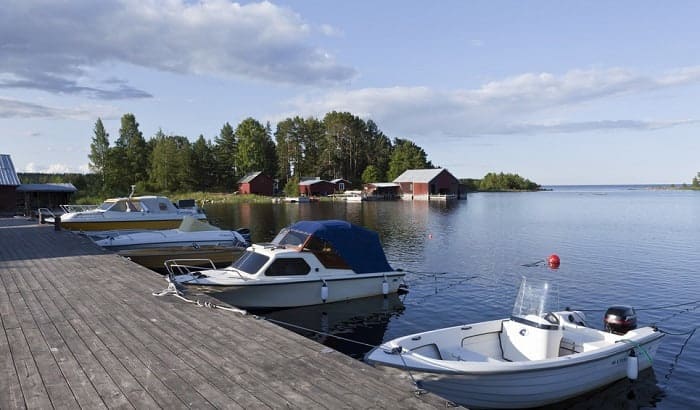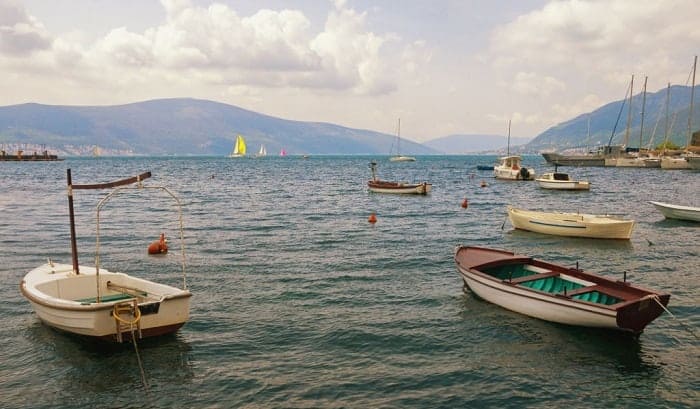You have to tackle numerous things when you own a boat. With this fact, beginners will likely have many questions like ‘How to moor a boat?’. There are multiple ways to respond to this query.
Each method specifies a particular purpose of mooring. I recommend putting some essential factors into consideration like the anchor, knotting, and gear. After you choose the correct method of mooring and tools, you can proceed to the steps.
This article will be featuring all these things. Read on so you can moor boats without any problems.
Table of Contents
What is Mooring a Boat
Mooring a boat means securing it on a fixed structure like a wharf or a buoy. Piers and jetties can also be an option for this. Anchors, chains, and ropes have a role in mooring too.
Proper mooring ensures safety despite the presence of waves, winds, tides, and currents. But if it’s done in the wrong way, your boat can be severely damaged.
Different Methods of Mooring
Due to water conditions and weather, different methods of mooring came into existence. You don’t moor your boat in only one place all the time. It’s not always in an ideal moor Layton area in Florida.
When your boat stays on calm waters for a short time, a simple concrete block method will suffice. A helical anchor is an appropriate method when there’s a storm. You need to screw it on the ocean floor so it won’t easily break free.
When strong wind is around, you have to go for Baltic mooring. This is practiced especially if there are no tugboats at a dock. Impact is the main concern in this scenario, but with the help of anchors and cables, you can counter it by berthing your boat lengthwise.
When docking space is limited, Mediterranean mooring or mooring perpendicularly is the best option. It’s also the recommended method when there’s a ramp or car carrier.
The Necessary Anchor
Danforth anchors are great for lighter boats in calm waters. This type of anchor is also called a fluke anchor that grasps well on muddy and sandy bottoms. Larger vessels need a hefty anchor like a kedge or navy anchor.
The versatile plow anchors are heavy enough for large boats. A mushroom anchor is the most common type, and you can find ones that weigh a thousand pounds. Its shape gives more suction on the seafloor, which makes it great to link with the buoy.
It’s vital to know the right size and weight of the anchor for your boat. You’ll have to consider its ability in digging the bottom too.
What Mooring Gear Do You Need
Anchors won’t function without chains, which can be lightweight or heavy. Typically, the lightweight type pairs with a heavy chain and a swivel shackle. You should get one that is the same length as the water depth.
A buoy lifts the lightweight chain to prevent the boat from swaying. It’s the chain that will likely move due to the current.
The heavy chain is fixed to the anchor by a galvanized shackle, and it stays on the seafloor. You have to multiply it by 1.5 when determining the needed length. This measurement gives additional weight to the mooring.
A buoy is essential in mooring too! It is because of the gear that absorbs motion from wind and waves. This function makes your chain afloat. You won’t always need it, but it’s best to have it if you worry about the security of your boat.
Last but not the least, the mooring pennant is a must-buy. It’s a rope that consists of three strands of nylon, used to link the boat’s hitch to the buoy.
There’s a pennant that is made of double-braid polyester. It’s more affordable than the previous kind. Regarding the usage, it’s for commercial fishing and metal wires. You can choose any of them but make sure that you buy the one with chafe-resistant coating.
In time, chafing creates damage to boats on the moor. A pennant may also rub on the hull, and when it continuously does so, it can leave scratches. To prevent this from happening, you can make the hitch and the buoy short.
Making it long only permits you to whip on your boat during inclement weather. Smaller boats are at risk of damaging their outboard motor when the pennant is too long.
Steps on How to Moor a Boat
Step 1. Eyeing the Safe Spot
Have sharp eyes in finding a safe spot for your boat. To abide by this concern, don’t choose a place that’s near bridges and locks. You have to look out for obstacles like submerged rock and tree stumps.
Keep your eyes wide open as you’ll never know what can damage your boat. Also, keep in mind that some waterways have rising or falling water levels. It must be your biggest concern when mooring at night.
When mooring at a river, you have to do it into the current with the bow. Let the front of the boat face upstream. You may need to turn around in some situations.
Step 2. Preparing Yourself and Everyone on Board for Mooring
Everyone onboard should be prepared for mooring in advance. Choose someone to fasten the line to a mooring ring in the boat’s front.
Step 3. The Ideal Maneuver
When you’re near the right spot, you have to slow down your boat. Your movements should be as slow as possible to give room for adjustments. When mooring alongside the bank, I recommend appointing someone to tend the mooring lines on the boat’s front and back.
Slowly approach the spot and maintain the bow in the currents or winds. At this point, the boat should be at a 45-degree angle with the bank. Place the boat into reverse when you’re two or three meters away from the spot and slow down.
Maneuvering can be arduous when there’s a strong current or wind. Consider that drifting can happen when you’re trying to align the boat with the mooring spot.
Reverse straight into the chosen spot. It’s best to get as much help as you can from your companions for a successful mooring.
Step 4. Knotting the Right Way
Knots are the final step for securing your boat. You can make two passes on a mooring ring or dock post. There will be an initial strain before you can complete the knot.
You can add a turn or more if the knot is for the security of a large boat and when there’s a strong wind. It ensures that you’ll be able to control the vessel. The next step is adding two half hitches that generate a clove hitch on the section of the rope that bears the tension.
If there’s an extra line, you can make more hitches for additional security. Allow the knot to pass the line by making a figure like the number eight. It will be around the cleat while you turn over the last loop for blocking the rope.
Final Words for Mooring a Boat Well
You can’t just ignore the importance of proper ways on how to moor a boat. To do it properly for the security of your boat when not in use, be mindful about the anchor, pieces of gear, and knotting.
Once you’ve moored your boat properly, you don’t have to worry about currents and harsh weather even if you’re not beside it.

“I am James Harvey – founder of Boating Basics Online. It is established with the drive to help out first-time boaters, which are those desiring to explore their way through the water. So if you are new to boating, start from here with me. “



